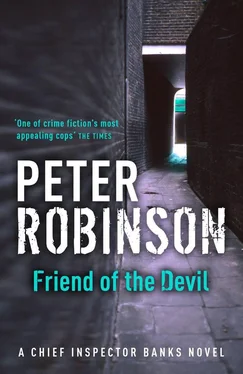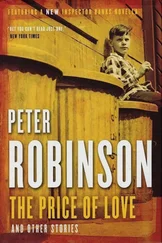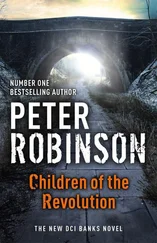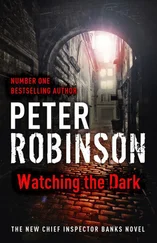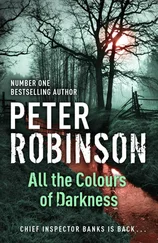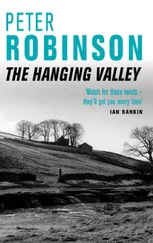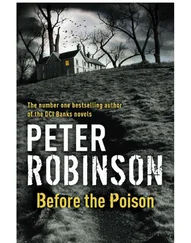“Liam McCullough.”
“He’s a good bloke,” said Banks. “Have him consult with Stefan on this. There has to be trace evidence in common: hairs, fibers, blood, the dimensions of the wound, something to link Lucy Payne and Kev. Let’s see if we can get the pathologists talking to each other, too, when Dr. Wallace has finished with Kev.”
“Okay,” said Annie. “Les Ferris has tracked down the hair samples from the Greg Eastcote case to compare Kirsten’s with the ones Liam and his team collected from Lucy Payne. He says he should be able to get a comparison fixed up for tomorrow morning. That could at least tell us once and for all whether it’s her we are dealing with or not. We also need to know why, if it is Kirsten, she started again after all this time.”
“If we’re right about her motivation,” said Banks, “then I’d guess it’s because she hasn’t been close to any other sex murderers over the past eighteen years. I’m going down to Leeds again sometime this week. While I’m there, I’ll talk to Julia Ford, see if I can push her in the right direction, and I’ll have a read through the old Chameleon postmortem reports Phil Hartnell got out. I have to check, but I seem to remember that the wounds the Paynes inflicted on their victims were similar to those that Kirsten’s attacker inflicted on her, from what you tell me. I know it can’t have been the same killer — Terence Payne is dead, and this Greg Eastcote seemed pretty definite for the killings eighteen years back — but maybe the similarity set her off.”
“But how could Kirsten know that the Paynes inflicted similar wounds on their victims?” Annie asked.
“There were plenty of media reports at the time, and later, after Lucy Payne was kicked loose. The press didn’t waste a moment in reminding people exactly what had been set free among them by our legal system, whether she could walk or not. Kirsten Farrow is also scarred physically, remember, and that could help us, too.”
“I don’t see how,” said Annie. “We can hardly ask every woman connected with the case to strip to the waist.”
“Pity,” said Banks. “But you’re right.”
Annie rolled her eyes.
“Anyway,” Banks went on, “we’ve got more than enough to be going on with. Let’s compare notes again when you’ve talked to Maggie Forrest.”
Annie stood up. “Right you are.” She paused at the door. “Alan?”
“Yes.”
“It’s good to be working together again.”
The rest of Banks’s Sunday went by in a whirl of meetings and interviews, none of which threw any more light on either the Hayley Daniels or the Kevin Templeton murders — both, apparently, killed by different people, for different reasons, in the same place.
Templeton’s parents arrived from Salford to identify their son’s body, and Banks had a brief meeting with them in the mortuary. It was the least courtesy he could offer under the circumstances. He thought it would also be a good idea to let them believe their son had been killed in the line of duty rather than acting on his own initiative. Templeton’s mother broke down in tears and talked about how they’d failed him, and how it all went back to when his sister ran away from home at seventeen, though she swore it wasn’t really their fault, that they couldn’t keep a girl who was sleeping with men the way she was in a god-fearing house. They’d tried to find her afterward, the father explained, even reported her missing to the police, but to no avail. And now they’d lost their son, too.
Banks now thought he knew who was in the photograph on Templeton’s bedside table, and why Kev had sometimes been so hard on families he interviewed. Christ, he thought, the secrets and burdens people carry around with them.
He needed to talk to Stuart Kinsey again about the snatch of music he had heard in the Maze the night Hayley was killed. Templeton said he had heard something similar in his notes, and Banks had a theory he wanted to put to the test.
As a result of all that, it was past six o’clock before he realized that he hadn’t rung Sophia about their proposed walk. It wasn’t that he hadn’t thought of her often during the day — in fact she was powerfully and frequently present in his thoughts for someone he had only just met — but time and events had conspired to push making the call out of his consciousness. It was too late for the walk now, he realized, reaching for the telephone, but at least he could apologize. He dialed the number she had given him. Her voice answered on the fourth ring.
“Sophia? It’s Alan. Alan Banks.”
“Oh, Alan. Thanks for calling. I heard about what happened last night on the news. I thought it would keep you busy.”
“I’m sorry about the walk,” said Banks.
“Well, maybe some other time.”
“You go back home on Tuesday?”
“Yes. But I’ll be back again.”
“Look,” Banks said, “even under the circumstances, I was thinking I’ve got to eat. I haven’t had anything except Fig Newtons all day. There’s a nice bistro on Castle Hill. Café de Provence. Would you consider having dinner with me instead?”
There was the briefest of pauses, then she said, “Yes. Yes, that would be nice. I’d like that. If you’re sure you can make it.”
Banks felt a knot of excitement in his chest. “I’m sure. I might not be able to stay long, but it’s better than nothing.” He checked his watch. “How about seven? Is that too early?”
“No, seven’s fine.”
“Shall I pick you up?”
“I’ll walk. It’s not far.”
“Okay. See you there, then. Seven.”
“Right.”
When he put the receiver down Banks’s palm was sweaty, and his heart was beating fast. Grow up, he told himself, and he got up and reached for his jacket.
Maggie Forrest was not only still living and working as a children’s book illustrator in the UK, she was still living in Leeds. She had spent three years in Toronto before returning and subletting a flat on the waterfront, down by the canal, and going back to her old line of work.
Granary Wharf had been developed in an area of decrepit old warehouses by the River Aire and the Leeds-Liverpool Canal at the back of City Station in the late ’80s, and was now a thriving area with its own shops, market, flats, restaurants, entertainment and a cobbled canal walk. On Sunday afternoon, when Annie arrived at the car park near the canal basin, it was quiet. She found Maggie Forrest in a third-floor flat. They had met briefly during the Chameleon business, but Maggie didn’t appear to remember her. Annie showed her warrant card, and Maggie let her in.
The flat was spacious, done in bright warm shades of orange and yellow. There was also plenty of light coming in through a large skylight, which Maggie would need for her artwork Annie guessed.
“What’s it about?” asked Maggie, as Annie sat on her beige modular couch. Maggie sat cross-legged in a large winged armchair opposite. The window looked out on the building site at the back of the Yorkshire Post Building, where yet more flats were going up. On examination, Annie thought, Maggie Forrest certainly had that slight, waiflike look about her that Chelsea Pilton had noticed in the killer, and that Mel Danvers at Mapston Hall had spotted about Mary. Her nose was a bit long, and her chin rather pointed, but other than that she was an attractive woman. Her hair was cut short and peppered with gray. Her eyes looked haunted, nervous. Annie wondered if anyone — Mel, Chelsea — might recognize her from an identification parade?
“It’s a nice flat,” said Annie. “How long have you been here?”
“Eighteen months,” Maggie answered.
“Never visit your friends down on The Hill? Ruth and Charles? It’s not far away. They don’t even know you’re in town.”
Читать дальше
